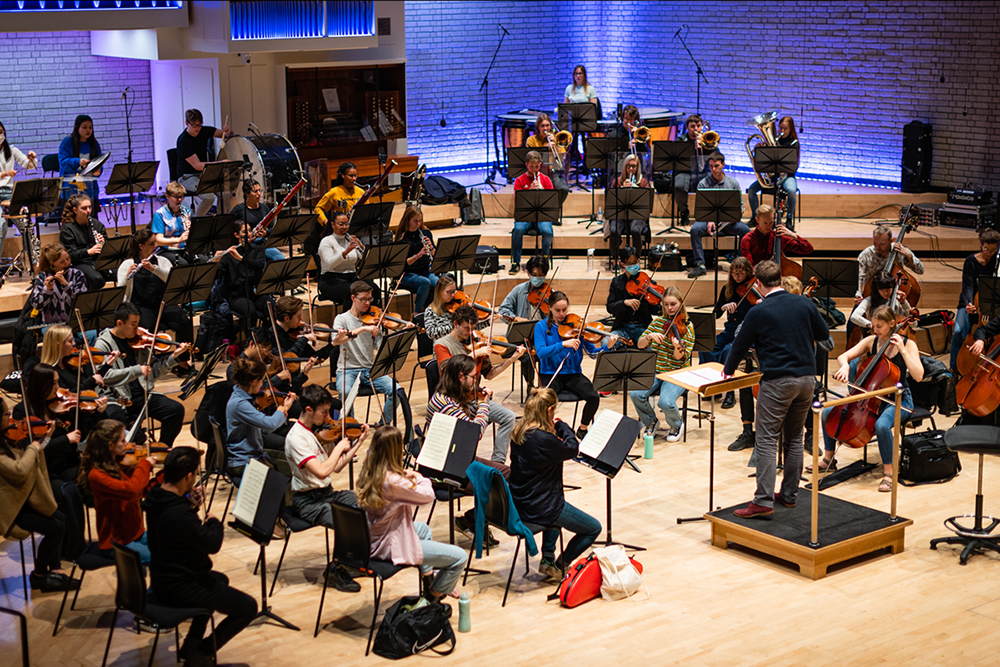The Non-professional Sector
At whatever level a conductor is working, a well-developed language of physical gesture is essential in order to run effective rehearsals and give musically coherent performances. In fact, one could make a very strong case for saying that the less expert the musicians, the more important the conductor’s technique and physical language is. One could stand in front of the Berlin Philharmoniker and conduct terribly: the result would still be fantastic because those musicians have the expertise, knowledge, experience, and confidence to ignore the conductor’s physical gestures if they are not helpful. The same cannot be said for an amateur wind band or a school orchestra – they need our help, and we conductors are quite capable of making them play worse than they should!
-Mark Heron
The non-professional music sector ranges from amateur and youth orchestras to brass bands, wind bands, choirs, big bands- and so on. This sector is very large and its practices and systems vary between countries and organisations to such a degree that it is impossible to provide a complete and detailed overview.
To be clear, when referring to the non-professional music sector, we are not speaking of non-professional conductors. We are referring to the musicians being those without professional-level musical training.

When working with amateurs, some conductors consciously adopt a different approach to when working with professionals. Others, on the other hand, do not. One can say that as a general rule, one should strive to implement as high a technical, interpersonal and overall professional level as possible, regardless of the level and age group of the musicians. Studying for a job in the non-professional sector should therefore not be approached much differently than if you are aiming for a job in professional orchestras, opera or other professional ensembles.
In the following chapters, we present a few thoughts on conducting, teaching, programming and performing in the non-professional sector. They will explore some of the challenges one might face when working with various groups of amateur musicians and how it differs from working with professionals. In the ConductIT Study Room / Rehearsal 2, you can also read about specific rehearsal strategies for different groups of musicians. You should also make sure you read the Performance section in the Study Room which considers practical and behavioural aspects of performance with amateur and youth groups as well as professionals.